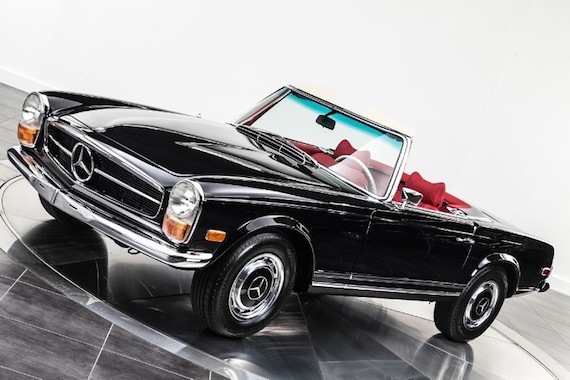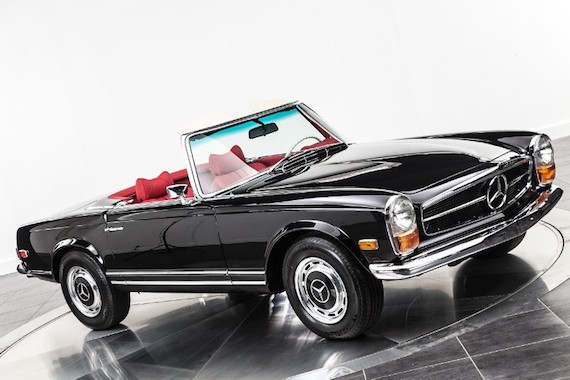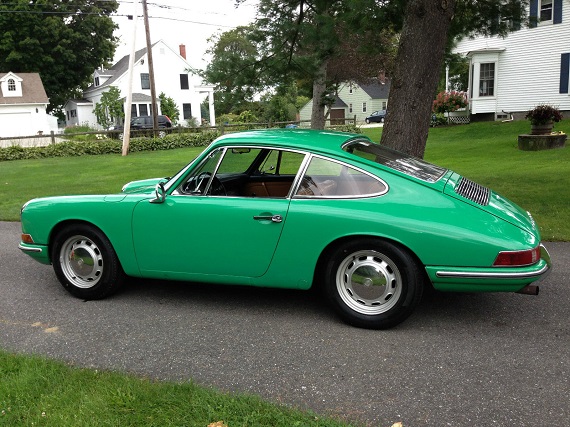I’ve slotted this car into the following categories of “never seen one” and “didn’t know existed.” While Glas is a rather obscure marque to some, I was well aware of the microcars and GT series of sports coupes they produced before being taken over by BMW in the 1960s. But this 1304CL for sale near Hanover, Germany left me scratching my head. After doing some research, I found out that the car we see here, the 1304CL, was a derivative of an earlier variant, the 1004 range, with the CL denoting “Combi Limousine.” Liftgates were still rather uncommon in the 1960s, but it wasn’t enough to interest customers. However, this car did survive for a bit after Glas was absorbed by BMW. It was also an inspiration for a later and much more loved variant of the 2002, the Touring.
Tag: 1968
We like to speculate about “what ifs” here at GCFSB when it comes to models a particular manufacturer may have not offered. The Mercedes-Benz SL was in for a large change in the early 1970s with the introduction of the R107 SL. Mercedes’ roadster would be transformed into more of a cruiser than a sporting machine, with a myriad of V8 engines on offer throughout its lifespan. Some lamented the fact that the SL was taking a turn towards luxury and abandoning the “sport light” formula embodied by its predecessors. A V8 was never offered in the W113 SL, but a few intrepid enthusiasts have taken it upon themselves to slot two extra cylinders under the hood of these drop tops, as we see with this restored 1968 280SL sporting a period 3.5 liter V8.
CLICK FOR DETAILS: 1968 Mercedes-Benz 280SL 3.5 on eBay
Comments closedBack in October we featured one of Magnus Walker’s cars, a 1977 Turbo Carrera, that garnered quite a bit of appeal given the mileage and overall condition. That build mostly held true to the original build and character of the car, restoring it to driver-quality shape rather than turning it into something else entirely. On an early 930, that sort of build makes a lot of sense. Here we have another car built by the Urban Outlaw, though in this case it is being sold by the current owner rather than by Magnus himself. This is a 1968 Porsche 911 whose build in 2009 was inspired by the 911R, an ultra-light-weight high power 911 that was intended to help Porsche meet homologation requirements in 1967. With a 2.2 liter flat-six tuned to S specifications, which I assume means it is putting out around 180hp, and less than 2100 lbs to move around this ’68 911 should be a very capable performer and with the short wheel-base it likely will make for some very exciting driving. Oh, and it’s Tangerine so obviously I could not turn away.
CLICK FOR DETAILS: 1968 Porsche 911 – Magnus Walker build on eBay
1 CommentI’ve chosen to feature this car almost purely out of curiosity. The Soft-window Targa is one of those cars where the design, from an aesthetic perspective, leaves me cold, but from a functional perspective I always find very intriguing. These cars are sort of an engineering peculiarity; only existent for a few years as Porsche’s answer to the need for an open-top vehicle that would also meet safety requirements the Soft-window Targa is pretty much exactly what it sounds like: a Targa where the window section behind the roll hoop could be lowered to create an airiness more akin to a cabriolet. These provided a variety of open-top motoring options between fully open and fully closed and with the integrated roll hoop they were sure to meet the increasingly stringent safety standards that Porsche worried would render the cabriolet obsolete. I just hate the look. With the rear window down these have always looked like something jerry-rigged in someone’s garage and no matter how interesting I think the design is I just can’t get past that. C’est la vie. Available for both the 911 and the 912, here we have a Burgundy 1968 Porsche 912 Soft-window Targa, located in California, with a stated 12,703 miles on it.
CLICK FOR DETAILS: 1968 Porsche 912 Soft-window Targa on eBay
Comments closedI have always had a particular fondness for the 912 and a part of me wishes Porsche would offer such an alternative now: a lower-cost, lighter, no-frills, four-cylinder version of the 911 that could be pushed relatively hard without needing the wider spaces of a track. I recognize that is an unlikely reality given that Porsche’s brand fits much more squarely in the upper tiers of cost and luxury, but I can always hope. Because of this I tend to keep my eye out for a 912, which is becoming increasingly difficult to find. Like any other early Porsche, 912 values have moved up and even though this has been at a much slower rate than we see with the 911 it is in part because of the 911 that the 912 has become much more prized. With a nearly identical appearance, but a 1.6 liter flat-4 rather than the 911’s 2.0 liter flat-6, the 912 provides interested buyers a 911 alternative at a much lower cost, which has always been its purpose. Here we have a Green 1968 Porsche 912 Coupe, located in Maine, with 76,000 miles on it.






